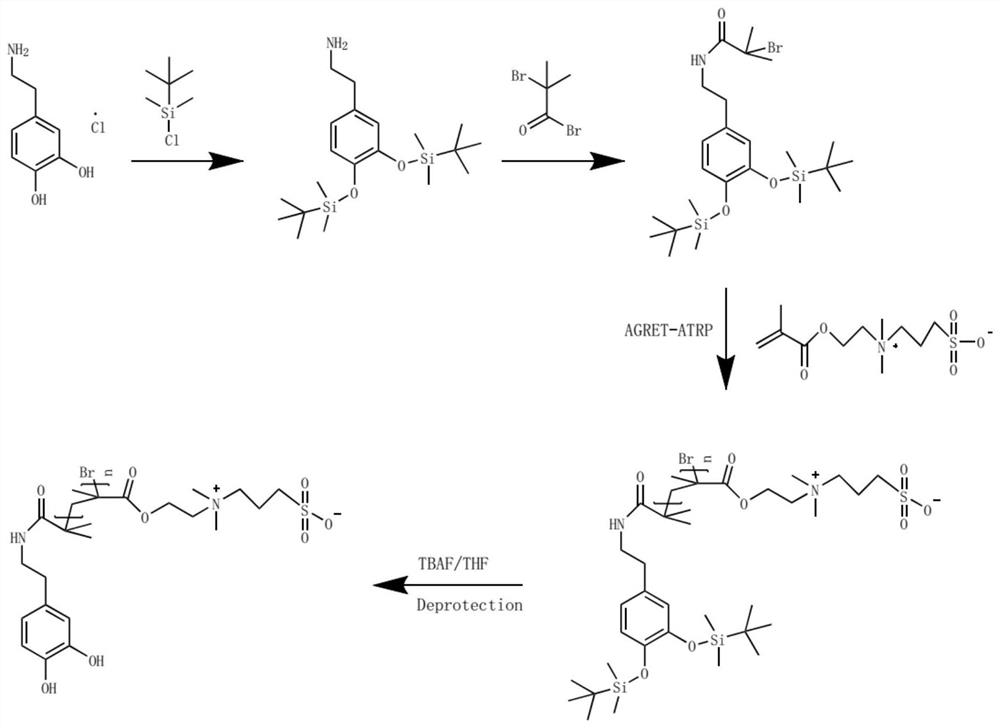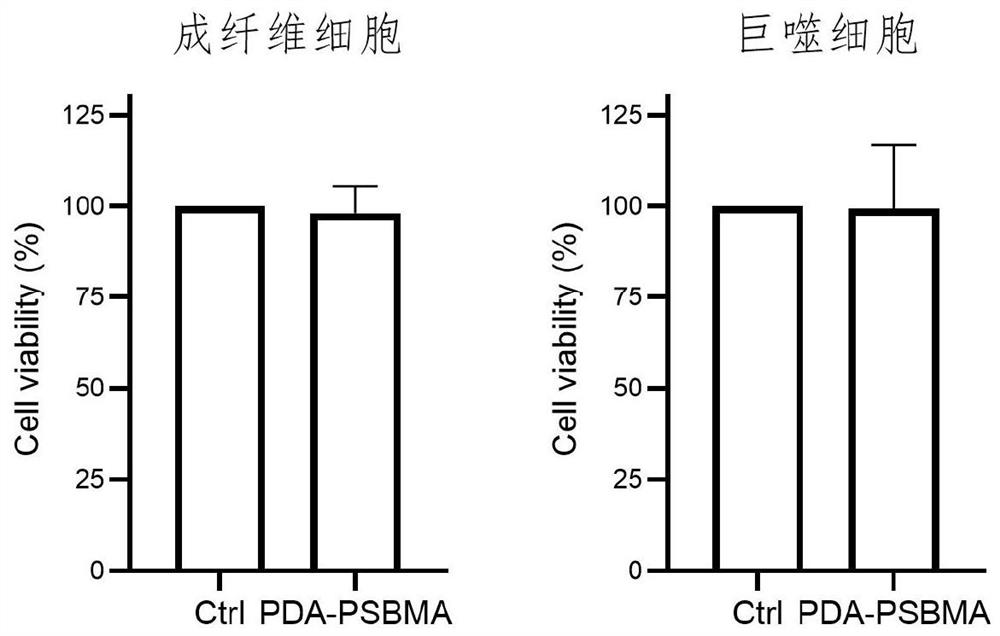Polydopamine-zwitterionic polymer anti-adhesion coating modification method and application thereof
A technology of zwitterion and polydopamine, which is applied in the field of polymer materials and medical implants, can solve the problems that it is difficult to achieve the effect of resisting long-term and chronic foreign body reactions, and achieve the avoidance of initiator residues, good biocompatibility, and biological good compatibility
- Summary
- Abstract
- Description
- Claims
- Application Information
AI Technical Summary
Problems solved by technology
Method used
Image
Examples
Embodiment 1
[0032] Example 1. This embodiment uses the electrode as a medical implant to illustrate the method for modifying the electrode with polydopamine-zwitterionic polymer anti-adhesion coating:
[0033] 1. In an ice bath, dissolve 1.89 g of dopamine hydrochloride (DA·HCl), 4.52 g of tert-butyldimethylsilyl chloride (TBDMS) and 3.4 g of imidazole in 30 ml of dichloromethane (DCM) solution. After the reaction ceased exothermic, the ice bath was removed. Next, the reaction was continued for 2 hours at 25° C. under nitrogen. The precipitate in the reacted mixed solution was removed by centrifugation, the supernatant was extracted and extracted to separate the organic phase, and then concentrated by rotary evaporation. The concentrated solution was purified by silica gel chromatography (dichloromethane:methanol=4:1), and then the purified solution was concentrated and vacuum-dried for 8 hours to obtain an intermediate product in the form of a yellow oily liquid. The reaction process ...
Embodiment 2
[0042] Example 2. This embodiment uses polyetheretherketone (PEEK) as a medical implant to illustrate the method for modifying the surface of PEEK with polydopamine-zwitterionic polymer anti-adhesion coating:
[0043] 1. 2.27g of dopamine hydrochloride (DA·HCl), 5.42g of tert-butyldimethylsilyl chloride (TBDMS) and 4.08g of imidazole were dissolved in 30ml of chloroform solution and reacted at 0°C. Next, the reaction was continued for 2 hours at 25° C. under nitrogen. The precipitate in the reacted mixed solution was removed by centrifugation, the supernatant was extracted and extracted to separate the organic phase, and then concentrated by rotary evaporation. The concentrated solution was purified by silica gel chromatography (dichloromethane:methanol=8:1), and then the purified solution was concentrated and vacuum-dried for 10 hours to obtain an intermediate product. The reaction process is as follows:
[0044]
[0045] 2. Dissolve 2.85g of the intermediate product an...
PUM
 Login to View More
Login to View More Abstract
Description
Claims
Application Information
 Login to View More
Login to View More - R&D
- Intellectual Property
- Life Sciences
- Materials
- Tech Scout
- Unparalleled Data Quality
- Higher Quality Content
- 60% Fewer Hallucinations
Browse by: Latest US Patents, China's latest patents, Technical Efficacy Thesaurus, Application Domain, Technology Topic, Popular Technical Reports.
© 2025 PatSnap. All rights reserved.Legal|Privacy policy|Modern Slavery Act Transparency Statement|Sitemap|About US| Contact US: help@patsnap.com



